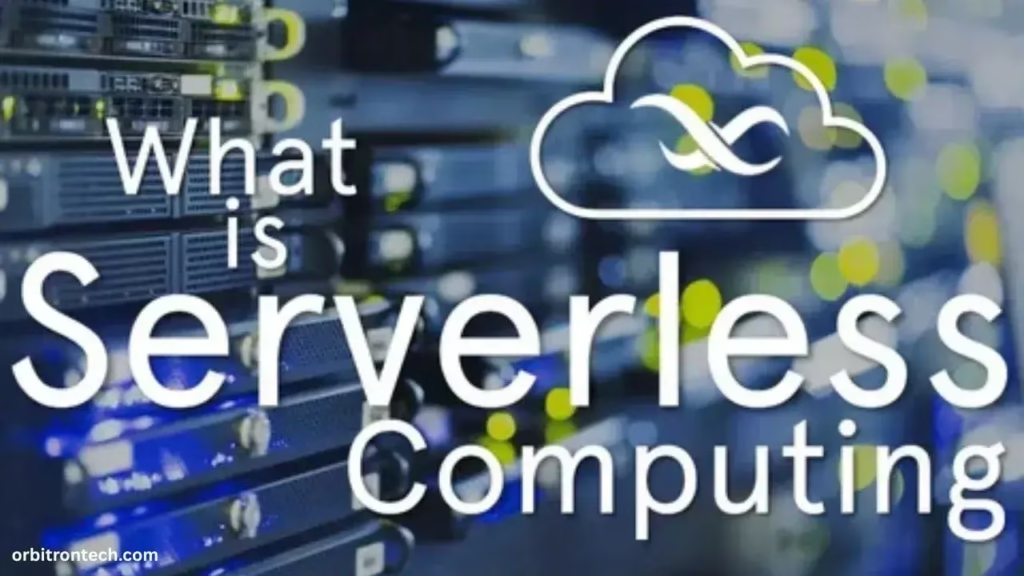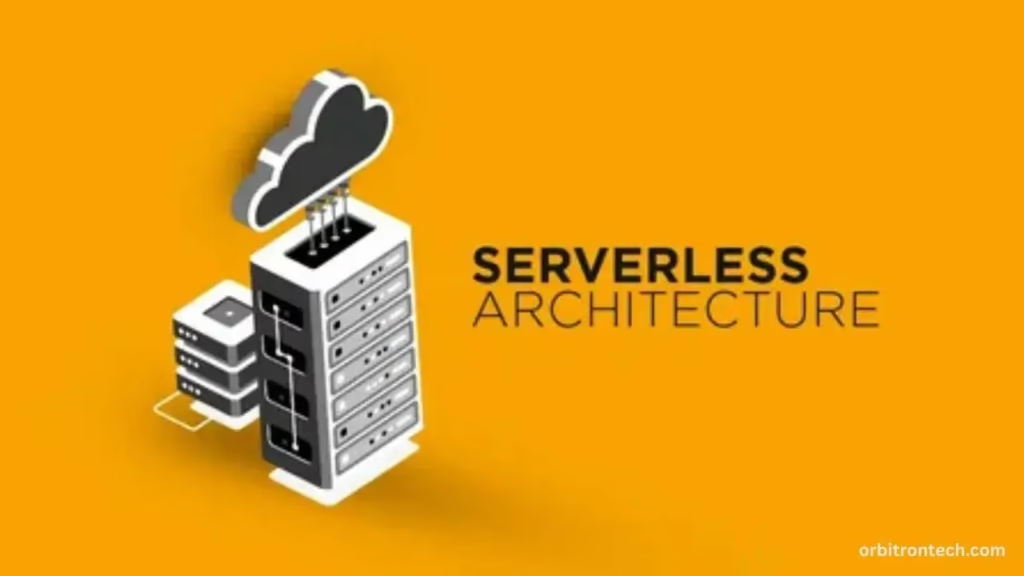What is Serverless Computing and How Does it Work?
What is Serverless Computing and How Does it Work? If you are asking this question, you are the not only one. In the modern era of software development, it is one of the most important cloud-native trends which applies, deployed, and scaled. But despite this discussion, many still confuse the concept a bit.

Serverless computing has rapidly defined how modern applications are built and deployed. In simple terms, serverless means that you can write code and run it in the cloud without worrying about provision, management, or maintaining a servers. You focus on writing code, and a cloud provider handles all background functions.
This innovative model highlights creativity by minimizing overhead, making it a powerhouse for cloud-native development, micro-services, and event-driven architectures.
Let us break this step-by-step so that you understand “What is Serverless Computing and How Does it Work?” where it shines, and where it cannot be the best fit.
What Is Serverless Computing?

Serverless computing is a cloud execution model where developers write code, and the cloud provider takes care of everything else. You do not think about server provisioning, load balancing, or capacity planning.
This doesn’t mean there are no servers rather; these servers are invisible to you. The cloud provider takes full control of the infrastructure. With serverless architectures, you can focus solely on:
- Your business logic
- The user experience
- Delivering value without infrastructure distraction
Here’s the key idea:
Serverless computing supports two main models:
- Function-as-a-Service (FaaS): Deploy personal tasks that execute in response to events.
- Backend-as-a-Service (BaaS): Use pre-built backend services through APIs like certification, databases and document storage.
It contrasts rapidly with IaaS (Infrastructure-as-a‑Service) and PaaS (Platform-as-a‑Service). While you continue focus on apps, serverless pushes the abstraction better, letting you pay in simple terms primarily based on utilization, often measured in milliseconds of execution and when it’s idle, you pay nothing. Means you only pay for what you use.
How Does Serverless Computing Work?
So, how does serverless computing actually work?
Imagine building an app where you never have to worry about servers. No provisioning, no maintenance, no scaling. Simply write your code and install it. The cloud provider (like AWS, Azure, or Google Cloud) takes care of the rest behind the scenes.
Here’s how serverless computing works behind the scenes:
- You write your function – A small piece of code that does one job.
- You deploy it to a platform like AWS Lambda or Azure Functions.
- When an event (like an API call, file upload, or database change) triggers it, the cloud provider runs your function instantly.
- It scales automatically – from zero to thousands of users.
- You’re only billed for the time and resources used during execution.
So even though there are servers, you as the developer don’t see them, touch them, or manage them. Everything just works.
The Origins and Evolution of Serverless
Let’s take a journey through serverless history:
- 2008 – Google App Engine (GAE)Google pioneered serverless-like concepts with GAE – letting developers deploy web apps without managing servers.
- 2012 – “Serverless” term coined
Cloud computing specialist Ken Fromm used the term “serverless” in an industry article to describe services consumed like utilities. - 2014 – AWS Lambda Launch
Amazon introduced Lambda, enabling Function‑as‑a‑Service (FaaS) – run a function in response to events, only pay when code executes. - 2016 – Azure Functions and Google Cloud Functions
Microsoft and Google followed suit, expanding the market and use cases. - Today:
- AWS, Azure, Google, IBM Cloud, Oracle, Cloudflare Workers and Alibaba offer robust serverless platforms.
- Serverless now encompasses compute, databases, storage, API gateways, microservices, and more.
This journey led to the serverless world we know: a full-stack, event-driven, pay-only-for-what-you-use experience.
Why Serverless is a Game-Changer
Boosts Developer Productivity
Imagine this scenario:
Picture this: You’re launching a new cell app. Instead of spending weeks configuring infrastructure, you simply write a few Lambda functions. They’re deployed instantly and scale with traffic.
That’s serverless empowerment which letting developers build quickly and confidently.
Developers love this because they can:
- Ship features faster
- Iterate based on feedback
- Spend time on product, not infrastructure
Cost Efficiency
Traditional compute (VMs/containers) charges you for idle compute capacity like a rental apartment; you pay whether you are there or not. Serverless billing, in contrast, is like buying groceries. You pay for what you use, even down to the 100‑ms slice typical of Lambda.
Scalability & Elasticity
Serverless platforms scale automatically from zero to millions of users requests per second instantly. You don’t need to predict load or reserve capacity. If a sudden surge in traffic hits, the system adapts in real-time.
Built‑In Resilience
Cloud providers automatically distribute serverless apps across availability zones, ensuring fault tolerance, automatic recovery, and uptime with no extra effort. Out-of-the-box high availability and disaster recovery without managing regions or zones.
Focus on Value
Ultimately, serverless lets you ditch the undifferentiated heavy lifting, like OS management or capacity planning and concentrate on delivering user value.
The Limitations and Trade‑Offs
No technology is perfect. While serverless is powerful, it comes with caveats.
Lesser Control
You can’t control the OS or runtime environment. So if you need specialized libraries or kernel access, it’s tricky.
Vendor Lock‑In
Each provider (e.g. AWS, Azure, Cloudflare) has unique APIs and setups. Migrating is possible but often labor-intensive.
Cold‑Starts
When a function hasn’t run for a while, the next request may experience a cold start delay, the time it takes to initialize a container. This introduces latency for latency-sensitive apps.
Some platforms mitigate this:
- Cloudflare Workers use edge architecture to reduce start‑up delays
- Open Liberty InstantOn for Java reduces startup times drastically
Execution Limits
Most functions have time limits. e.g. AWS Lambda has a 15-minute max. Long-running jobs may require alternative approaches like spinning off jobs to specialized compute services.
Debugging & Monitoring Complexity
Because functions are distributed and ephemeral, debugging can be harder. You will need state-of-the-art observability techniques like structured logging, tracing, and metrics.
What is Serverless Architecture?
Serverless architecture refers to building software applications using cloud-managed services that operate on an event-driven model. It removes the need for traditional server management and allows different components to communicate via APIs and events.

A typical serverless architecture includes:
Function-as-a-Service (FaaS)
The FaaS is one that most people think of when they hear serverless. This is the heart of serverless. You deploy small, stateless functions that:
FaaS is what most people think about after they hear serverless.
- Run on-demand (in response to events)
- Have flexible time limits
- Scale automatically
Backend-as-a-Service (BaaS)
Pre-built backend services offered via API, without code deployment:
- Authentication (e.g. AWS Cognito, Firebase Auth)
- Databases: Serverless SQL/NoSQL
- File Storage: Object stores like AWS S3
- Pub/Sub messaging: e.g. Google Pub/Sub
These help build full serverless solutions without writing every backend component yourself.
API Gateways
A front layer that routes HTTP requests to serverless functions, and performs:
Use an API gateway to:
- Route HTTP requests
- Apply rate limits
- Secure endpoints
- Monitor traffic
E.g. AWS API Gateway, Azure API Management, Google Cloud Endpoints.
Databases and Object Storage
Serverless databases like Amazon DynamoDB and Azure Cosmos DB, Cosmos DB let you scale horizontally with demand, paying only for what you use.
For files, Amazon S3 and Google Cloud Storage are go-to options.
Event Streaming & Processing
Services like Amazon Kinesis, Apache Kafka, Azure Event Hubs pair with serverless functions to build real-time pipelines for data analytics, IoT, and more.
What is Serverless Architecture Example?
Let’s make it real with a story.
Imagine a photo-sharing app. When a user uploads a picture an e-commerce site that sends email confirmations after purchases:
- A customer clicks “Buy Now”
- An event is triggered and sent to a Lambda function
- That function processes the order and sends an email using a BaaS messaging service like SendGrid
- Another function stores metadata in a serverless database like DynamoDB
This is all done without managing a single server. That’s the power of serverless architecture.
What is Serverless Computing: Success Stories
Let’s say you’re running a food delivery service. Every time a customer places an order:
With serverless computing:
- A customer places an order → triggers a serverless function
- The function checks inventory → stores order in DynamoDB
- Sends SMS confirmation using Twilio API
- Triggers a kitchen dashboard update
This logic runs only when needed. If there are no orders, nothing runs—and you pay nothing. That’s serverless computing efficiency in action.
Coca‑Cola
Developed in 100 days, their touchless pouring app uses AWS Lambda reducing server complexity and time-to-market.
Liberty Mutual
Built global transaction-processing pipelines using AWS Step Functions, handling 100 million transactions per month cost-efficient and scalable.
Genentech
Runs clinical data analysis in hours instead of weeks using serverless compute and boosting productivity dramatically.
Typical Serverless Use Cases
Microservices & API Backends
Apps like Uber use serverless to break down functionality into small functions. Want a ride-sharing API? One function handles driver search, another pricing, etc. Combine these via an API Gateway. You can scale each component independently based on traffic.
Real-Time Data Processing
Think of Netflix. They can processing hundreds of thousands of video snippets simultaneously using serverless, making video previews faster and cheaper to generate.
- Data streams in via Kafka or Kinesis
- Trigger Lambda functions to filter, enrich, transform
- Store results in DynamoDB or S3
This architecture is powerful for analytics, fraud detection, log processing, and more.
Asynchronous Workflows & Batch Tasks
Trigger functions to run when new files land in storage, or queues fill. Think:
- Image resizing
- Thumbnail generation
- PDF digesting
- Payroll runs
With serverless, batch jobs are parallel, elastic, and cost-efficient.
Scheduled Tasks & Cron Jobs
Use cloud EventBridge, CloudWatch Events, or Azure Timer Functions to invoke functions at set intervals for backups, data syncs, or cleanup tasks.
Chatbots & Voice Interfaces
Serverless functions are great for chatbots, webhooks, or API backends. They’re lightweight, stateless, and easy to deploy.
Each message triggers a function, which processes input, hits an NLP service (like Amazon Lex), and replies with replies and global authority for decentralized architecture.
Cost Management and Optimization
Monitor Billing and Usage
- Use AWS Cost Explorer and Lambda metrics
- Set usage alerts
Fine‑Tune Memory Settings
Increasing memory often improves performance and can reduce runtime sometimes at lower cost.
Utilize Reserved Concurrency
Lock concurrency limits if you want predictable scaling and budgeting.
Archive Cold Data Efficiently
Store logs or historical data in cost-effective storage like S3 Glacier.
Security Considerations
Shared Security Responsibility
- Cloud providers follow a shared responsibility model
- You handle application logic, credentials, and data
Least Privilege Access
Use AWS IAM roles to grant minimal permissions:
- Each function only accesses what it needs
- CloudTrail for audit logs
Secure Connections
- Enforce SSL/TLS
- Use AWS Key Management Service for encryption
- Secure API Gateway endpoints
Monitoring & Alerts
- Use CloudWatch Alarms, AWS Security Hub, GuardDuty
- Adopt DevSecOps best practices
Looking Ahead: The Future of Serverless
Serverless is evolving fast.
Edge‑Enabled Serverless
With Cloudflare Workers, serverless functions run at the edge, closer to users, making apps faster. Resulting in ultra‑low latency and instant scaling.
Beyond Functions: Serverless Containers
Services like AWS Fargate let you run containerized apps serverlessly and blending container power with serverless simplicity.
Serverless + AI
Platforms like Amazon SageMaker and Google Vertex AI combine machine learning with serverless to build smarter apps.
Hybrid & Multi‑Cloud Architecture
Serverless becomes part of flexible, hybrid systems and running code across AWS, GCP, Azure, or even on-prem. All managed via unified APIs and tools like Knative and Kubernetes.
What is Serverless Computing in AWS?
Amazon Web Services (AWS) is a pioneer inside the serverless area.
Here are key AWS serverless services:
- AWS Lambda: Run code without provisioning servers
- Amazon API Gateway: Expose functions via Connecting HTTP requests to your Lambda functions
- Amazon S3: Store files and trigger functions on upload
- DynamoDB: Fast, scalable, serverless NoSQL database
- AWS Step Functions: Coordinate functions into workflows
AWS even offers Aurora Serverless – a serverless SQL database that automatically scales with usage.
With AWS, you could build a whole backend from APIs to databases with out touching a server.
What is Serverless Computing in Azure?
Microsoft Azure also provides robust serverless computing tools:
- Azure Functions: Execute functions on demand
- Azure Event Grid: Event routing service
- Cosmos DB Serverless: Scalable NoSQL database
- Azure Logic Apps: Automate workflows without writing code
Azure’s serverless model is tightly integrated with its developer tools and enterprise ecosystem, making it a top choice for .NET developers and businesses but supports Python, JavaScript, Java, and more.
What is Serverless Computing GeeksforGeeks?
According to GeeksforGeeks, Serverless Computing is a method of providing backend services as needed. Developers can focus on frontend logic while cloud providers handle infrastructure.
This definition emphasizes the core appeal; automation, simplicity, and efficiency which makes it ideal for modern developers.
Their guides are great for learning serverless from a programming perspective, especially if you’re just starting out.
What is Serverless Computing PPT Resource?
Looking for a PowerPoint presentation on this topic?
You can check out this Serverless Computing PPT from SlideShare. Just search for:
- “Serverless Computing PPT”
- “AWS Lambda PPT”
- “Azure Functions Overview”
These presentations are perfect for team meetings, educational sessions, or business proposals.
What is Serverless Computing PDF Resource?
Need a downloadable resource?
For offline reading, try this Serverless Computing PDF on ResearchGate. It covers:
- Introduction to serverless
- Benefits and limitations
- Use cases and architecture
- Future trends and forecasts
Bookmark it for in-depth learning and presentations.
Pros and Cons of Serverless Computing
✅ Pros
- Pay-per-use billing – no idle cost
- Automatic scaling – up or down
- Reduced DevOps – focus on code, not infrastructure
- Fast deployment – from idea to production quickly
- Integrated security and monitoring from the provider
❌ Cons
- Cold starts can slow first-time function calls
- Execution time limits (e.g., 15 minutes for AWS Lambda)
- Vendor lock-in if not designed carefully
- Harder to debug distributed functions
Still, for most applications especially microservices, APIs, and batch jobs serverless is often the most efficient choice.
Is Serverless Right for You?
Yes; if your workload is:
- Event-driven (e.g., form submissions, file uploads)
- Short-lived (less than 15 minutes)
- Highly variable in traffic
Then serverless is your best friend.
It’s ideal for:
- Startups needing to launch fast
- Enterprises wanting scalable APIs
- Developers tired of infrastructure headaches
Why Go Serverless — And Why Now
- Faster Time to Market – Focus on features, not servers
- Lower Overall Costs – Only pay for what you use
- Built‑In Scalability – Handle spikes and lulls
- Increased Resilience – Automatic availability
- Know Your App – Strong observability with logs and traces
- Future-Ready – AI, edge computing, container blend
Conclusion: Embrace the Power of Serverless
Now you know what is serverless computing and does how it works. From real-world examples to in-depth comparisons with cloud models, it’s clear that serverless is more than just a trend. It’s a future-forward solution for building scalable, cost-effective apps. Serverless computing empowers you to innovate faster, gives you freedom, flexibility, letting you builds amazing software, faster than ever.
By focusing on functions, APIs, managed backend services, and event‑driven workflows, you build software that’s resilient, cost-effective, and time‑efficient.
If you’re building APIs, microservices, IoT apps, or even machine learning workflows, serverless is the future-proof foundation you need.
Building with serverless feels like flying lights, engines, and wings are handled behind the scenes; you simply focus on steering and enjoying the ride.
Start small. Build smart. Think big. Scale automatically. Go serverless.


